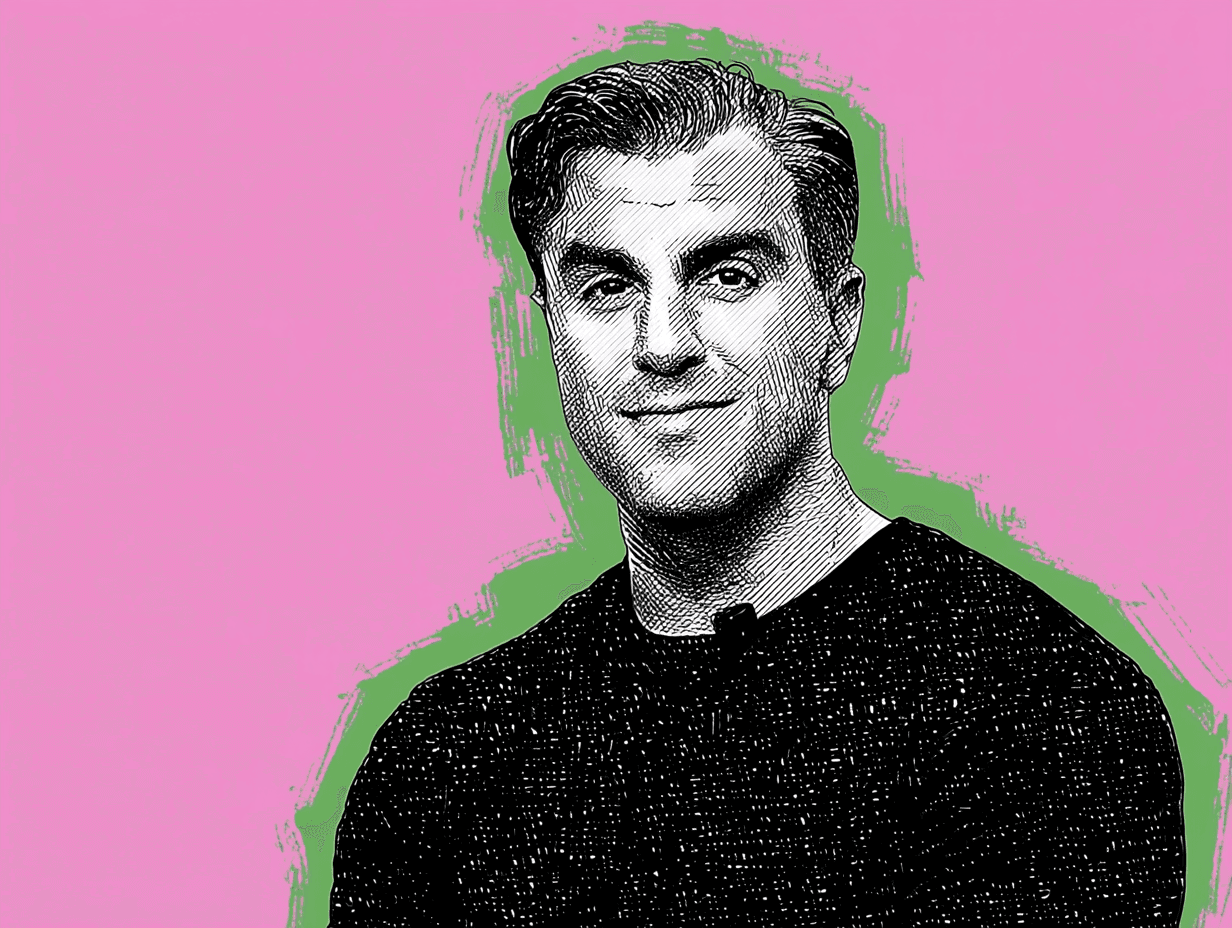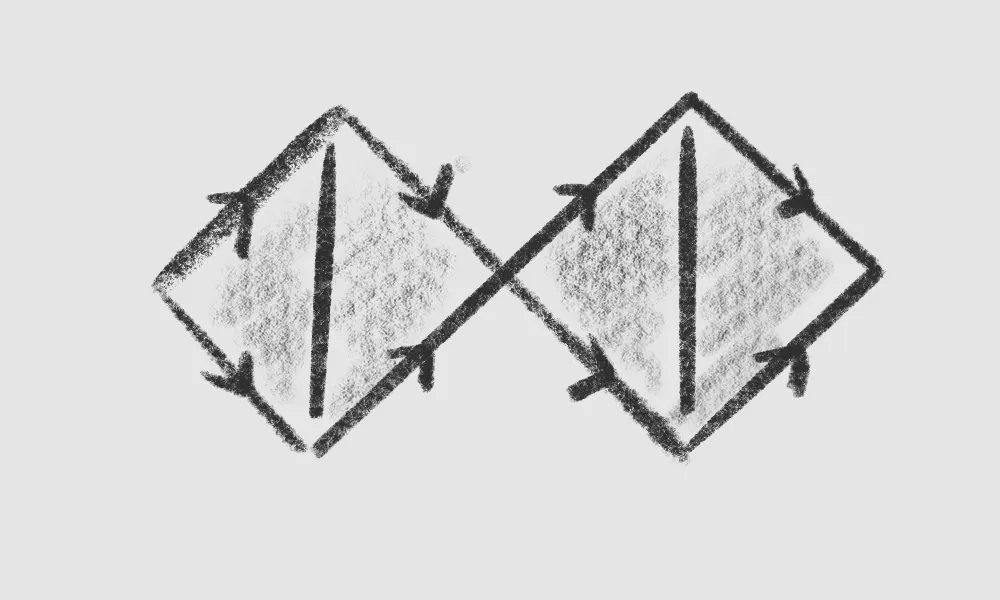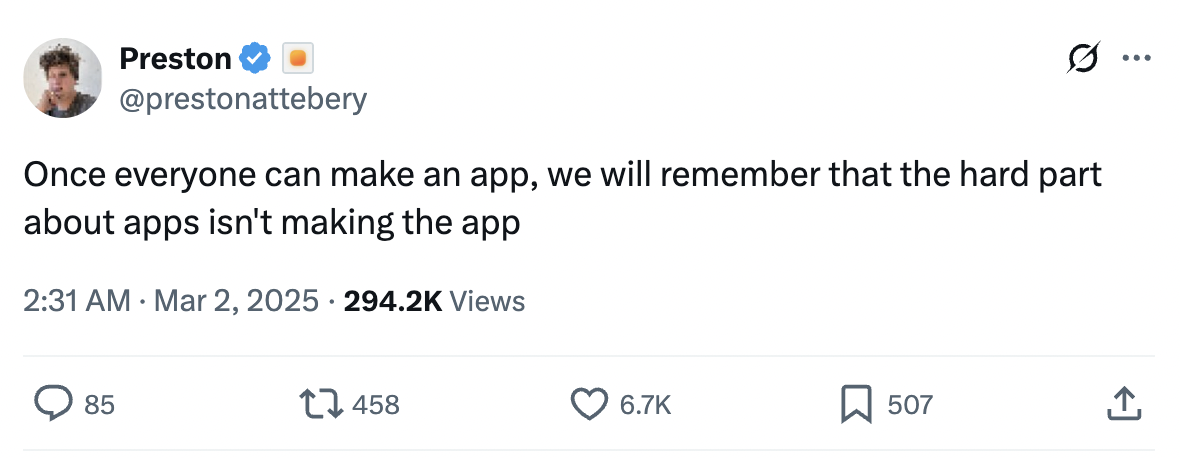
Brian Chesky is the only Fortune 500 CEO with a design background. Out of 500 of the world’s most powerful companies, only one is led by a designer. That fact alone says something about the gap between design and leadership.
I have felt this gap firsthand. A few years ago, I was in a workshop that looked like a parody of itself. The walls were covered in sticky notes. We had empathy maps, personas, journey maps, lo-fi wireframes, and multiple iterations of the same flow taped up. It looked impressive, like we were doing “real design.”
But when I looked at what we actually shipped to users, it was… fine. Not great. Not memorable. Definitely not the thing people would love and keep coming back to.
I recently realized that design is no longer about creating products people love. Too often, it has become more about proving that we followed the process. That we matter.
The process trap

Jenny Wen captured this perfectly in her piece, Don’t trust the design process.
We stopped doing the real thing that would be the most empathetic, useful, and that would actually serve business outcomes best: building stuff that worked well and that people would love.
Between 2014 and 2020, design became obsessed with The Process. Instead of showing great products and designs, portfolios were filled with flows, personas, user stories, and concept tests. We became servants to the process.
And it made sense at the time. Ten years earlier, design was mostly about making things pretty. We needed to evolve, to prove we were serious about understanding users, business outcomes, and complex systems.
But in proving that, we lost something. The craft. The product. The thing people actually touch.
We convinced ourselves that good design was about following the steps. That if we just trusted the process, we would get to the right outcome. But some of the best work I have seen has come from skipping steps, backtracking, starting from a solution, or simply building something because it felt right.
The process was supposed to serve us. Instead, we started serving it.
Why this matters for leadership
This obsession with process is also why many designers struggle when they step into leadership roles.
Designers are trained to perfect the details. To sweat every pixel. To prove the process. But CEOs do not win by obsessing over process. They win by zooming out, seeing the big picture, and moving fast when something works.
When you are running a company, you do not get credit for having the perfect persona. You get credit for putting something in people’s hands that actually works.
Pixel perfection is not strategy. Process perfection is not leadership.
Beyond the pixels
Fifteen years ago, designers were split. Design often felt transactional. You had “UI” designers who made things "pretty" and would generate dozens of designs without really understanding "the Why", and “UX” designers who mapped flows and wrote specs.
Eventually, those roles collapsed into the broader title of product designer. A product designer wasn’t just polishing UIs or diagramming flows. They were expected to own the end-to-end experience: from framing the problem, to shaping the solution, to ensuring it shipped in a way that made sense for the business and the user.

We are now at the next reset. The job today feels different, and the expectations have shifted too. A good product designer is no longer defined only by craft. They need to understand strategy, feasibility, and impact. The lines between PMs and designers are blurring, and I think the best work often comes from those who can move across both worlds.
Being a great designer isn’t about making things look good, it’s about making them work. That shift happens when you think beyond design and dive into business and strategy.
Why does this matter? Designers with product thinking ask sharper questions, understand behavior, and make choices that drive both user outcomes and business goals.
If design is about how things work, product thinking is about why they work. Here’s how to build it:
Ask why - Don’t stop at visuals. Ask why a user would click, drop off, or care. Great products are intentional at every step.
Study failed products - Beautiful design isn’t enough. Failed apps usually missed on usability, psychology, or business model. Learn from their mistakes.
Read - Business, strategy, user psychology. It’s the fastest (and cheapest) way to sharpen your product sense. Here are some inspiration.
What about AI?
Of course. I wouldn’t write a piece in 2025 without mentioning it.
AI is already doing the easy parts for us. It can generate flows in seconds, spin up dozens of UI variations, or simulate onboarding journeys at a scale no design sprint ever could. It can reverse-engineer competitors’ monetization models or stress-test copy across hundreds of edge cases.
I like Tal Raviv’s framing of the “Super IC.” With AI as leverage, a single designer can cover what used to take a full team. From research synthesis to prototyping to measuring outcomes. Which makes the question no longer can you build it? but should you build it?
And that’s the part AI can’t touch. The skill that remains scarce is understanding people, framing the right problems, and turning complexity into experiences they actually trust. Or as Preston Attebery said, “Once everyone can make an app, we will remember that the hard part about apps isn’t making the app.”

Good design is not the process. It is the decision of what to build.
When I mentor younger designers, I see the same mistake over and over again. They put the process above the product. They spend weeks inventing flows and frameworks that look great in a portfolio but collapse when real people use them.
The process is just a tool, not the goal. If you want to grow, stop worshipping it. Bend it. Skip steps when they do not matter. Start from the solution if it gets you closer to something people will actually love.
Because for companies to succeed today and tomorrow, design has to sit at the heart of how decisions get made. Design is not decoration. It is not politics. It is a way of thinking, rooted in people. And when it becomes part of the culture, it helps organizations move faster, share knowledge more openly, and build products that actually drive impact.
This is also why designers are so well positioned to lead. We already know how to balance the craft, the product, and the user. If we can also learn the language of business and strategy, we will close the gap that has existed for too long between design and leadership. And that is where the real opportunity lies: not in following the process perfectly, but in shaping the future of the company itself.